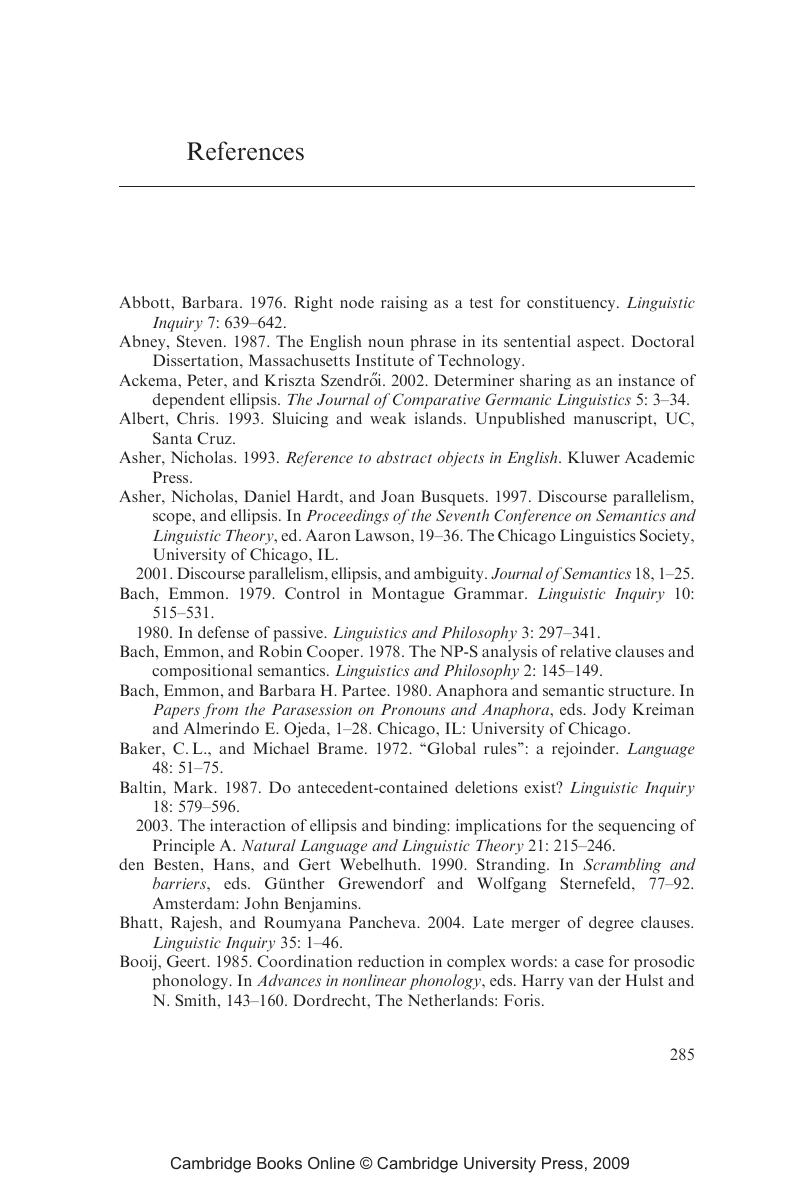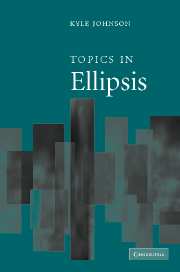Book contents
- Frontmatter
- Contents
- 1 Introduction
- 2 VP Ellipsis and constraints on interpretation
- 3 Direct compositionality and variable-free semantics: the case of Antecedent Contained Deletion
- 4 The view of QR from ellipsis
- 5 Argument Contained Ellipsis
- 6 Variable island repair under ellipsis
- 7 On binding scope and ellipsis scope
- 8 The silent content of bound variable pronouns
- 9 A step-by-step guide to ellipsis resolution
- 10 Shared constituents and Linearization
- Notes
- References
- Index
- References
- Frontmatter
- Contents
- 1 Introduction
- 2 VP Ellipsis and constraints on interpretation
- 3 Direct compositionality and variable-free semantics: the case of Antecedent Contained Deletion
- 4 The view of QR from ellipsis
- 5 Argument Contained Ellipsis
- 6 Variable island repair under ellipsis
- 7 On binding scope and ellipsis scope
- 8 The silent content of bound variable pronouns
- 9 A step-by-step guide to ellipsis resolution
- 10 Shared constituents and Linearization
- Notes
- References
- Index
- References
Summary

- Type
- Chapter
- Information
- Topics in Ellipsis , pp. 285 - 299Publisher: Cambridge University PressPrint publication year: 2008

